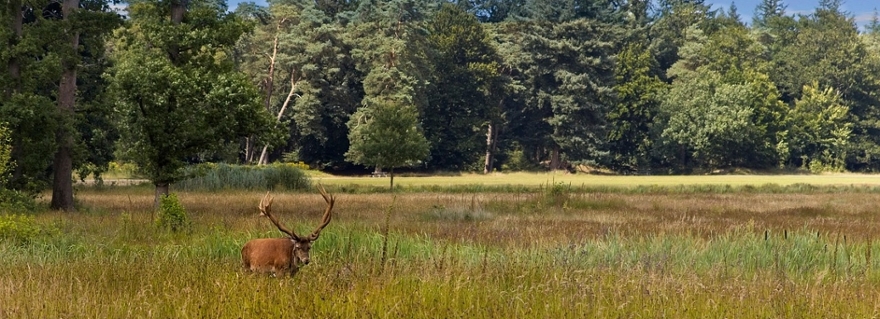
Professor argues: ‘Let nature take its course’
Give organisms like plants and animals the freedom to move, interact and meet their own needs, and they will thrive on their own, says Professor Geert de Snoo. Our interference often ends up doing more harm than good.
Nature managers use a variety of strategies to try to restore ecosystems. Their efforts often follow fixed ideas and goals. For example, removing young trees to preserve heathland, or getting rid of non-native plants and animals that threaten native species. The driving motivation is often to return landscapes to the way they used to be.
But despite these good intentions, we are failing to halt the loss of biodiversity, De Snoo points out. The number of species is declining rapidly, both in the Netherlands and around the world. Take Dutch butterflies as an example: according to Statistics Netherlands (CBS), their populations fell by an average of 56 percent between 1992 and 2024.
Looking back isn’t the best way forward, says the environmental biologist. The conditions today are simply different than they were in the past.
It would mean, for example, allowing non-native species to establish themselves
Let nature surprise you
De Snoo offers a fresh perspective on biodiversity and how to support it. His message, in short: let go. ‘It’s a more relaxed way of engaging with nature,’ he says. ‘It means moving away from the mindset of “we want this here”, and instead allowing nature to surprise us.’
That approach can go against our instincts, he admits. ‘We like to manage things.’ It would mean, for example, allowing non-native species to establish themselves, something conservationists currently go to great lengths to prevent. It would also mean letting wildfires burn, in most cases. ‘Although that’s a more extreme form of letting go,’ De Snoo acknowledges.
Freedom for organisms
To put this new vision into practice, De Snoo and co-author Kees Musters outline three forms of freedom that organisms need. The first involves the non-living parts of an ecosystem – such as soil, water, and air – which must be clean and freely accessible to support life.
The second concerns living organisms themselves. Plants and animals must be able to interact naturally, without human interference. The third is freedom of movement. That means no introducing or removing species, and allowing them enough time and space to complete their life cycles.
A self-governing forest
To make these rights more concrete, De Snoo suggests giving them legal status. In some places, nature already has legal rights. The Whanganui River in New Zealand is a well-known example.
‘The research provides a framework for reflecting on the way we currently treat nature’
‘Maar er is nog niet zoiets als het recht voor organismen om zich vrij te mogen verplaatsen’, zegt De Snoo. Dat zou volgens hem de natuur wel degelijk helpen. ‘Uit die eerdere rechtszaken zie je dat ze leiden tot een betere bescherming. Dat is hoopgevend.’
‘But there’s still no recognised right for organisms to move freely,’ De Snoo says. He believes such a right could help protect ecosystems. ‘Previous cases show that legal recognition can lead to better protection – that’s encouraging.’
He’s clear, however, that his research is not a ‘recipe book’ for nature managers. Much of the planet is shaped by human activity, and we can’t just ignore that. ‘But it does provide a framework for reflecting on the way we currently treat nature,’ he says.
In the village of Doorn, in the Dutch province of Utrecht, De Snoo sees a promising example: a project called Het bos dat van zichzelf is, or The forest that owns itself. As the name suggests, the forest belongs to no one. So, if a branch falls on your head while walking there, there’s no forest manager to blame – the forest manages itself.
‘Free organisms for bending the curve of biodiversity loss’ was published in Biological Conservation. The study was also featured on the Dutch radio programme Vroege Vogels on Sunday 27 July.
